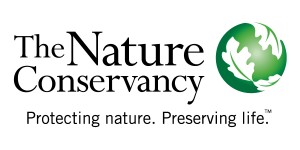Author Archives: FoNOAA Admin
University Corporation for Atmospheric Research
UCAR provides services to and promotes partnerships in a collaborative community of researchers and educators who are dedicated to understanding the atmosphere—the air around us—and the complex processes that make up the Earth system, from the ocean floor to the Sun’s core. We manage the National Center for Atmospheric Research and UCAR Community Programs on behalf of the National Science Foundation and the university community. Our headquarters are in Boulder, Colorado.
United Fishermen’s Marketing Association, Inc.
UCLA Institute of the Environment and Sustainability
UC Davis Bodega Marine Laboratory
The Weather Coalition
The University of Oklahoma
University: http://www.ou.edu/web.html | National Weather Center: http://nwc.ou.edu/
Founded in 1890, The University of Oklahoma (OU) is today a coeducational public research university located in Norman, Oklahoma with over 30,000. students enrolled, most located at its main campus in Norman. Employing nearly 3,000 faculty members, the school offers 152 baccalaureate programs, 160 master’s programs, 75 doctorate programs, and 20 majors at the first professional level. David Boren, a former U.S. Senator and Oklahoma Governor, has served as President of the University of Oklahoma since 1994. The school is ranked first per capita among public universities in enrollment of National Merit Scholars and among the top ten in the graduation of Rhodes Scholars. PC Magazine and the Princeton Review have rated OU one of the “20 Most Wired Colleges” in both 2006 and 2008, while the Carnegie Foundation classifies it as a research university with “very high research activity.” Located on its Norman campus is the National Weather Center, a unique blend of university, federal (primarily NOAA), and private sector weather and climate organizations.
The Ocean Project
The Ocean Project catalyzes and supports collaborative action for conservation in partnership with aquariums, zoos, museums, youth leaders, and others in a growing global network.
The Ocean Foundation
www.oceanfdn.org![]() The Ocean Foundation (TOF) is the only community foundation for the ocean with a mission to support, strengthen, and promote those organizations dedicated to reversing the trend of destruction of ocean environments around the world. We work with a diverse community of donors (including individuals, corporate donors, private foundations, and governments) who care about the coasts and oceans. In this manner, we grow the financial resources available to support marine conservation in order to promote healthy ocean ecosystems and benefit the human communities that depend on them. The ocean covers 71% of the earth’s surface and transcends all geographic boundaries. The ocean is responsible for producing every second breath we take. For nearly twenty years now, we have strived to bridge the gap between philanthropy – which has historically given the ocean only 7% of environmental grantmaking, and ultimately, less than 1% of all philanthropy – with the communities that need this funding for marine science and conservation the most. However, the ocean covers 71% of the planet. That doesn’t add up. The Ocean Foundation (TOF) was founded to help change that calculus.
The Ocean Foundation (TOF) is the only community foundation for the ocean with a mission to support, strengthen, and promote those organizations dedicated to reversing the trend of destruction of ocean environments around the world. We work with a diverse community of donors (including individuals, corporate donors, private foundations, and governments) who care about the coasts and oceans. In this manner, we grow the financial resources available to support marine conservation in order to promote healthy ocean ecosystems and benefit the human communities that depend on them. The ocean covers 71% of the earth’s surface and transcends all geographic boundaries. The ocean is responsible for producing every second breath we take. For nearly twenty years now, we have strived to bridge the gap between philanthropy – which has historically given the ocean only 7% of environmental grantmaking, and ultimately, less than 1% of all philanthropy – with the communities that need this funding for marine science and conservation the most. However, the ocean covers 71% of the planet. That doesn’t add up. The Ocean Foundation (TOF) was founded to help change that calculus.
Our community foundation services include: (1) grantmaking, (2) accepting charitable donations, (3) building funder collaboratives, (4) fiscal sponsorship and project and fund hosting, and (4) corporate partnerships. We operate three conservation initiatives: (1) International Ocean Acidification Initiative, (2) Blue Resilience Initiative, and (3) Redesigning Plastics Initiative. Other program areas include: (1) Capacity Building, (2) Ocean Science Diplomacy, (3) Investing in Ocean Health, (4) Supporting Island Communities, (5) Carbon Offsets, (6) Sustainable Blue Economy, (7) Networks, Coalitions and Collaboratives, and (8) research/development/consulting.
The Nature Conservancy
The Nature Conservancy is a global environmental nonprofit working to create a world where people and nature can thrive. Our mission is to conserve the lands and waters on which all life depends. To achieve this, we must boldly address the biodiversity and climate crises over the next decade. By maximizing our ability to affect change between now and 2030, we can shape a brighter future for people and our planet. Thanks to more than a million members and the dedicated efforts of our diverse staff, we impact conservation throughout the United States and in 75 countries and territories. Much of this work relies heavily on collaborations with communities, governments, scientists, and other organizations.



